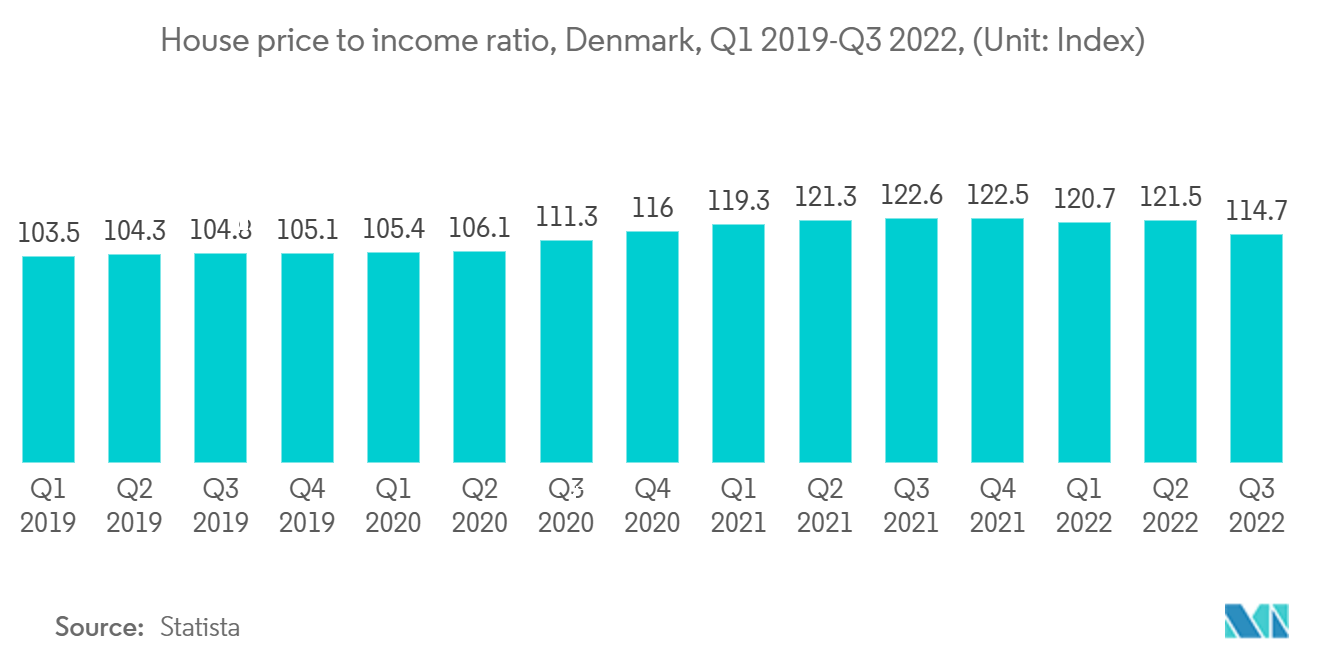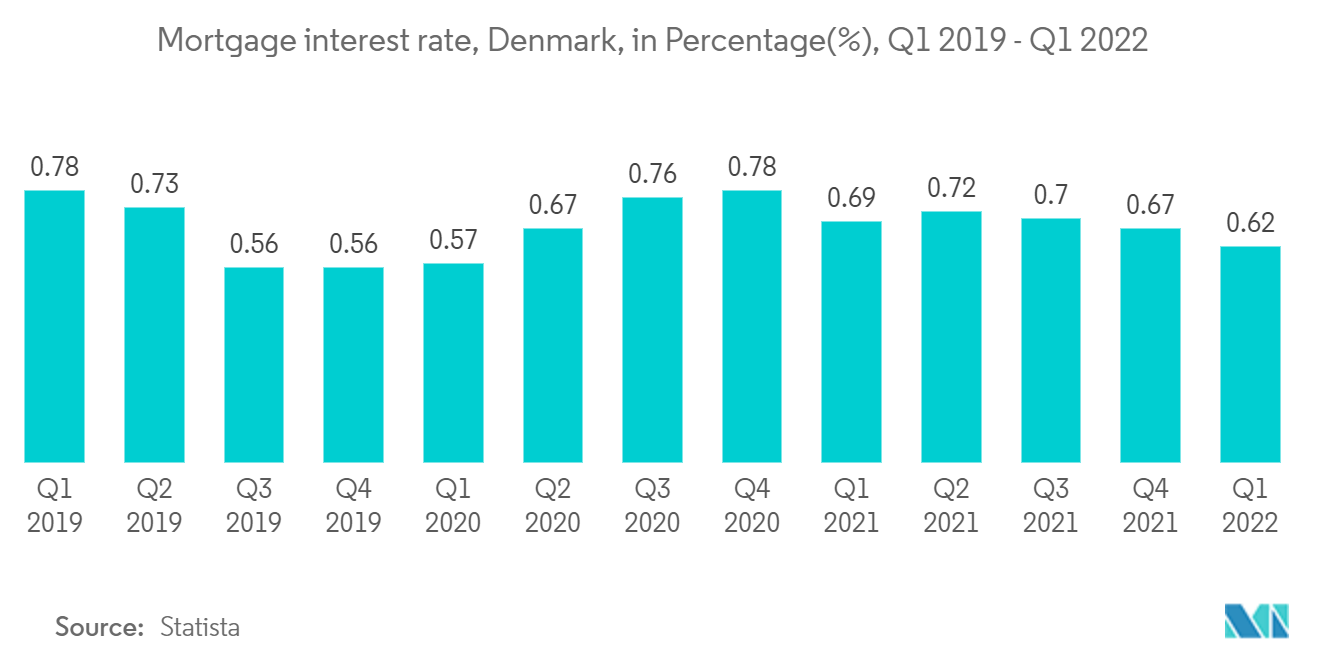Market Trends of Denmark Luxury Residential Real Estate Industry
This section covers the major market trends shaping the Denmark Luxury Residential Real Estate Market according to our research experts:
Increasing demand for luxury residences driving the market
Since mid-2020, the second homes market has been in high demand. Luxury buyers are motivated to seek properties in vacation destinations with easy access to beaches, mountains, or other scenic spots. Top corporate executives, business people, and start-up founders have seen their wealth grow exponentially in the last two years. As a result, they are increasingly interested in purchasing a second home with porches, balconies, and swimming pools to relax and enjoy the fresh air. Furthermore, multiple offers made by developers have made such properties far more lucrative and appealing to various buyers.
Smart features such as automated video doorbells, remote-controlled curtains, and even automated temperature and lighting controls are now popular among buyers. Today's purchasers are looking for a 'second home' rather than a holiday home that they will only use occasionally, so internet connectivity and fast broadband speeds are also critical so that they can work efficiently. Demand continues to rise rapidly despite the pandemic, buoyed by negative mortgage interest rates. In the first quarter of 2021, sales of detached/terraced houses rose by 40% to 13,632 units from a year earlier, following annual growth of 15.4% in 2020. Likewise, sales of owner-occupied flats rose by 37% y-o-y to 4,980 units in Q1 2021, while holiday home sales almost doubled to 3,662 units over the same period.
Smart homes use connected devices and appliances to perform actions, tasks, and automated routines to save money, time, and energy. Home automation systems allow the integration of various smart devices and appliances controlled through a centralized system. The growth of smart homes is primarily driven by factors such as perpetually growing internet users, increased adoption of smart devices, awareness of fit and healthy lifestyles, and a rising sense of home safety and security. The share of smart home users in Europe was larger among countries in Western Europe, with Denmark, Netherlands, and Sweden have the smartest home users.

Lowering prices of residential real estate driving the market
The Danish housing market took years to recover, with prices only returning to pre-crash levels in late 2020, boosted largely by a 17% price increase between the fourth quarter of 2019 and the first quarter of 2021. Interest rates in Denmark have begun to rise in response to the eurozone's spiraling inflation, which saw prices rise by 10% in September 2022, a new record and the first time the bloc experienced double-digit inflation. Denmark will match that 10% figure in September 2022. Interest rates in Denmark have risen above zero for the first time in a decade but remain below those of the European Central Bank, where the base rate recently reached 0.75%.
According to the real estate website Boligsiden, prices for apartments in Denmark fell by 1.5% year on year in July 2022. The group attributed this to rising supply, with available apartments increasing by 7.2% and available houses increasing by 3.8%. This is a natural result of the new terms available to home buyers in recent months. Interest rates have risen, making financing a new home more expensive. At the same time, buyers must consider rising energy and electricity prices and rapidly rising inflation, which puts individual household finances under strain. This impacts the number of housing transactions in a market where supply is also increasing. This combination helps to drive down prices because some sellers must lower their asking price to get the deal.


